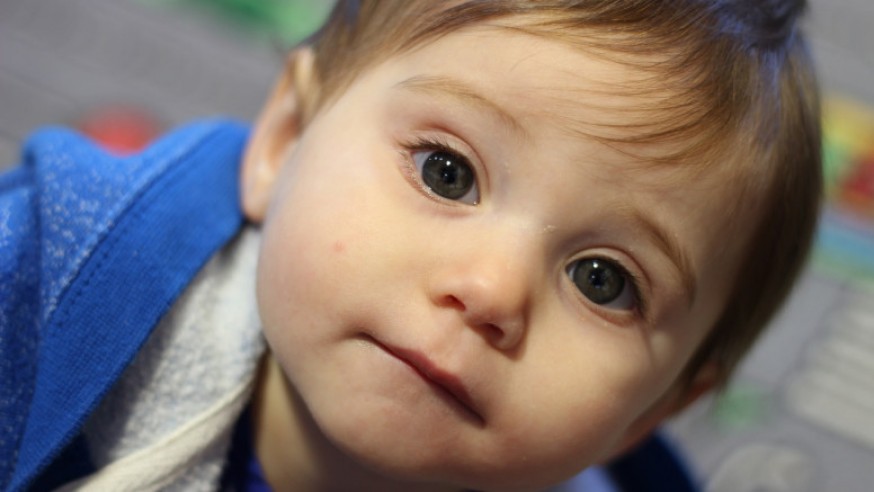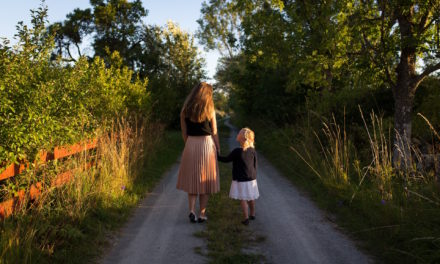“When we hang out with my friends who have kids- my 3-year-old son just hangs out by himself talking about the toys. He doesn’t play with toys with the other kids. I don’t want him to stand out. How do I teach him to play? How do I play with him? Help!”
It’s perfectly okay for your child to want to hang out by himself sometimes, but if you want to increase his opportunity to engage with other kids- you CAN teach him how to play!
Some parents like to get down on the floor and act silly with their kids (my husband I and both fall into this category) while others are more comfortable talking with their kids and aren’t naturally inclined to make a fool of themselves by acting like a toddler.
The importance of play for early learning and childhood development has been researched and well documented. This is my excuse for wearing cat ears while typing this. I swear my daughter put them there.
We know play skills are important but are they teachable? Isn’t play something that just comes naturally to some kids? The short answer is: play IS teachable.
How can you get your kiddo to play more? Here are a few ideas. Remember, these are not my original ideas or opinions. These are backed up by decades of behavior analytic research. Give one or all a shot!
1) Modeling
Simply put- you demonstrate how to play, then encourage your child to do it. Let’s say you have a toy horse. Make the horse gallop across the floor while making clopping noises with your mouth. Make it neigh. Make it jump on your child’s lap. Then hand the horse to your child, and say “Your turn” or “You try it” or the like.
2) Positive Reinforcement
When you want your child to engage in play with others, set up a simple contingency so they know what’s expected of them and what they will get as a reward. Example: “First play blocks with Bobby, then you can read books by yourself.”
3) A More Structured Positive Reinforcement System
Reinforce playing with others in increments of time. Start small, then increase gradually. “Play with friends with one minute, then you can ___(do a puzzle, whatever)___.” Next time do 2 minutes, 3 minutes, etc. You can use a timer and let your kiddo choose what they want to do when the timer is up.
You might say “These are all great and everything, but what do you want me to actually do when playing with my child? Playing is not second nature to me.”
Here are the Behavior BFF dos and don’ts of playing!
DO: Watch other kids the same age as your son or daughter to get ideas.
DON’T: Be a creep at the park or play space staring. Try to be discreet, please.
DO: Leave your pride and insecurities at the door.
DON’T: Worry what others will think about you acting like a horse. Or a cat. Or a butterfly. Not that I’ve already been all these things before 10 am today…I don’t know what you’re talking about.
DO: Make animal noises, silly faces, and big hand gestures. Yes to this: “Neeeeeeiiiiigh!” while galloping around the room holding a toy horse.
DON’T: Recite facts. How boring is this: “This horse is black. Horses live on farms. They make a whinny noise. Sometimes people ride horses.”
DO: Encourage your child to copy you. Flap your wings and fly around the house. Tell your child “Follow me. Flap your wings. Let’s fly!”
DON’T: Stop when your child starts doing something with you. Play WITH them. Don’t just model for them. Do it together and have some fun!
DO: Just go with the flow.
DON’T: Always use play time to teach pre-academic skills. Use it to teach imaginative play and interact with your child.
Play is important. We know that. Quit being a grown-up for a while and teach your tiny person how to have silly, goofy, embarrassingly toddler age-appropriate FUN!
Playing is backed up by tons of research. Here is a small sample about teaching play skills. Use it as an excuse to act a fool with your littles- it’s fun!
REFERENCES
Buell, J., Stoddard, P., Harris, F. R., & Baer, D. M. (1968). Collateral social development accompanying reinforcement of outdoor play in a preschool child. Journal of Applied Behavior Analysis, 1(2), 167.
Charlop-Christy, M. H., Le, L., & Freeman, K. A. (2000). A comparison of video modeling with in vivo modeling for teaching children with autism. Journal of autism and developmental disorders, 30(6), 537-552.
Cooper, J., Heron, T., & Heward, W. (2007). Basic Concepts. In Applied Behavior Analysis (2nd ed.) pp. 256-260. Columbus: Pearson.
Ginsburg, K. R. (2007). The importance of play in promoting healthy child development and maintaining strong parent-child bonds. Pediatrics, 119(1), 182-191.
Hoch, H., McComas, J. J., Johnson, L., Faranda, N., & Guenther, S. L. (2002). The effects of magnitude and quality of reinforcement on choice responding during play activities. Journal of Applied Behavior Analysis, 35(2), 171.
Stahmer, A. C., Ingersoll, B., & Carter, C. (2003). Behavioral approaches to promoting play. Autism, 7(4), 401-413.











